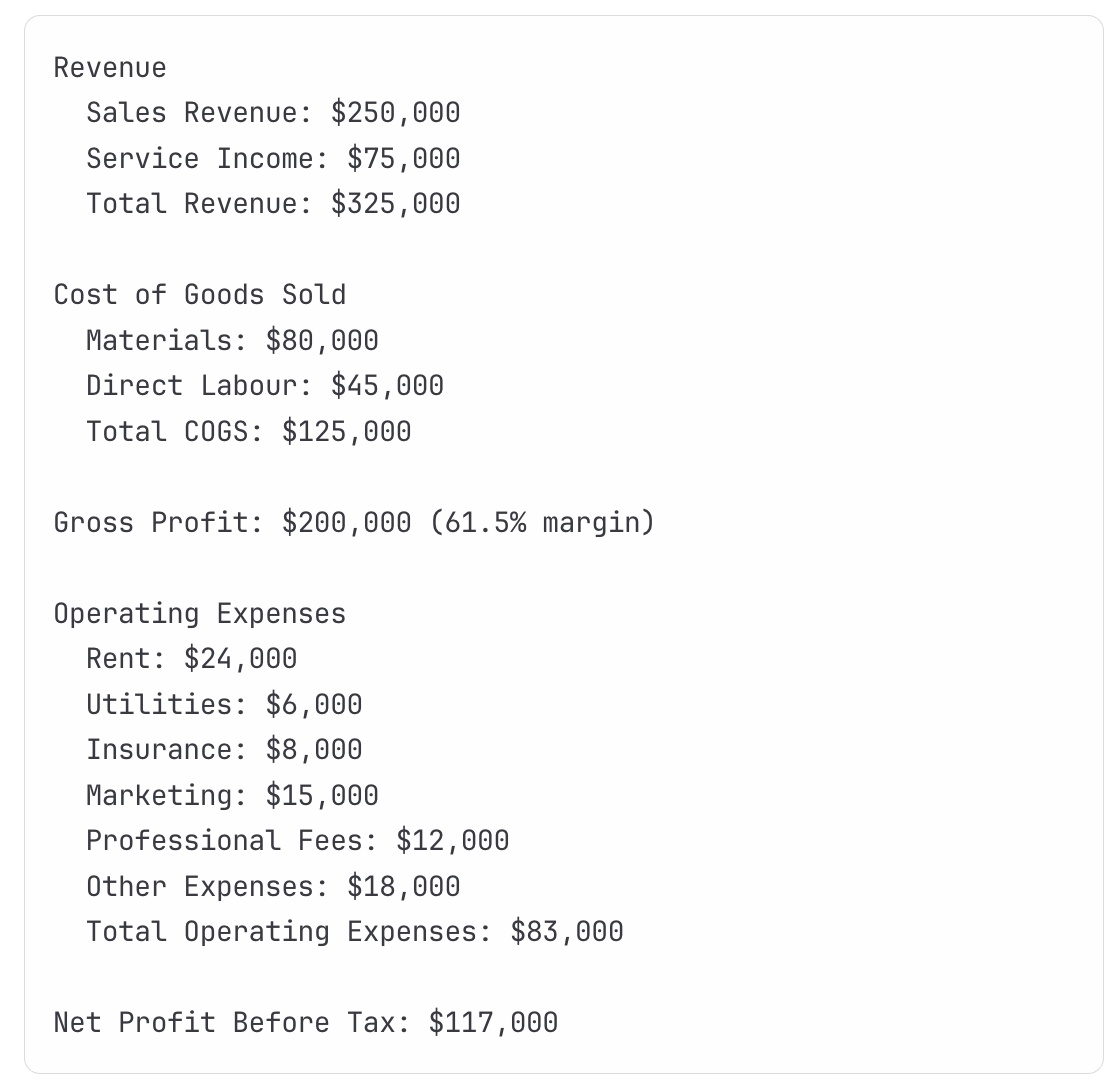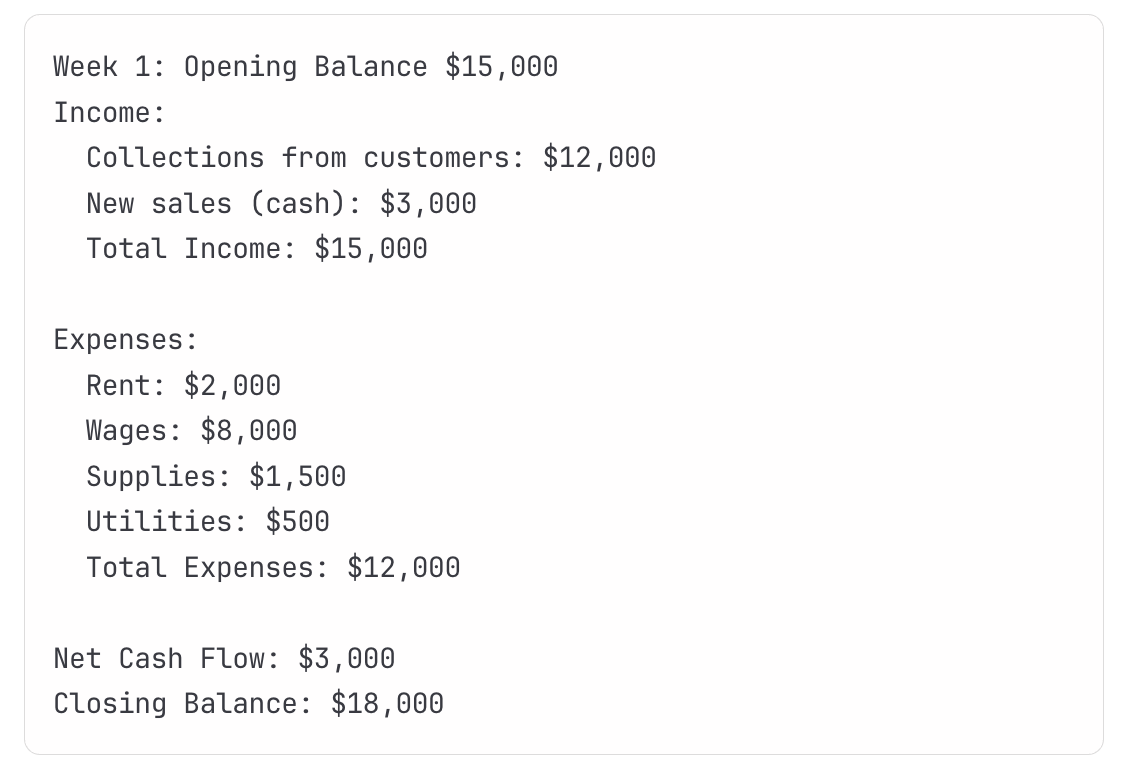
Published: August 2025
Small business accounting forms the backbone of every successful Australian enterprise. Whether you're running a café in Melbourne, a consulting firm in Sydney, or a trades business in Perth, understanding your numbers isn't just about compliance - it's about survival and growth in an increasingly competitive marketplace.
The Australian Taxation Office reports that over 2.5 million small businesses operate across the country, contributing approximately 35% of Australia's GDP. Yet, research from the Australian Small Business and Family Enterprise Ombudsman reveals that poor financial management remains one of the leading causes of business failure, with 60% of failed businesses citing cash flow problems as a primary factor.
This comprehensive guide will transform your approach to small business accounting, providing you with the knowledge, tools, and strategies needed to not just survive, but thrive in the Australian business landscape.
Small business accounting encompasses far more than simply recording income and expenses. It's a systematic approach to tracking, analysing, and reporting your business's financial performance that enables informed decision-making and ensures compliance with Australian regulations.
Your chart of accounts serves as the filing system for all financial transactions. For Australian small businesses, a typical chart includes:
Assets:
Liabilities:
Equity:
Income:
Expenses:
Double-entry bookkeeping ensures every transaction affects at least two accounts, maintaining the fundamental accounting equation: Assets = Liabilities + Equity.
Example Transaction: You purchase $5,000 worth of inventory on credit.
This system provides built-in error checking and gives you a complete picture of your business's financial position at any point in time.
The profit and loss statement shows your business's revenue, expenses, and net profit over a specific period. Australian businesses must prepare this statement for tax purposes and business analysis.
Sample P&L Structure:

Your balance sheet provides a snapshot of your business's financial position at a specific date, showing what you own (assets) and what you owe (liabilities).
Key Balance Sheet Ratios:
Cash flow statements track the movement of cash in and out of your business across three categories:
Understanding cash flow is crucial - a profitable business can still fail due to poor cash flow management.
Most Australian businesses with annual turnover exceeding $75,000 must register for GST. For taxi and limousine services, the threshold is $0.
GST Calculation Example: If you sell a product for $110 (including GST):
Input Tax Credits:You can claim GST credits for business purchases. If you buy office supplies for $220 (including $20 GST), you can claim the $20 as an input tax credit.
Use our free GST calculator here
BAS reporting frequency depends on your turnover:
Sole Traders:
Companies:
Partnerships:
Trusts:
Employers must contribute at least 11% (as of 2023-24) of eligible employees' ordinary time earnings to their superannuation fund. This rate increases to 12% from 1 July 2025.
Calculation Example: Employee earns $60,000 annually:
Record All Transactions: Enter every business transaction within 24-48 hours. This includes:
Bank Reconciliation: Reconcile bank accounts weekly to catch errors early and maintain accurate cash balances.
Accounts Receivable Management:
Accounts Payable Review:
Financial Statement Preparation: Generate monthly profit and loss statements and balance sheets to track performance trends.
Year-End Procedures:
Cash flow challenges affect 60% of Australian small businesses. Effective cash flow management involves forecasting, monitoring, and optimising the timing of cash inflows and outflows.
13-Week Rolling Forecast Example:

Accelerate Receivables:
Optimise Payables:
Inventory Management:
Popular Australian options include:
Xero:
MYOB:
QuickBooks:
Modern accounting software integrates with:
This integration reduces manual data entry, minimises errors, and provides real-time financial insights.
Mobile apps enable small business owners to:
Immediate Deductions:
Capital Expenses (Depreciated):
Mixed-Use Expenses:
Fixed Rate Method: Claim $0.52 per hour for home office use (2023-24 rate). This covers:
Actual Cost Method: Calculate the percentage of home used for business and claim that proportion of:
Example Calculation: Home office is 10m² of a 150m² home (6.67% business use)Annual home expenses: $25,000 Business deduction: $25,000 × 6.67% = $1,668
Financial KPIs:
Operational KPIs:
Zero-Based Budgeting: Start from zero and justify every expense. This approach helps identify unnecessary costs and ensures resources align with business priorities.
Variance Analysis: Compare actual results to budget monthly:
Example Variance Analysis: Budget: Revenue $50,000, Actual: Revenue $47,000Variance: -$3,000 (6% unfavourable)Investigation required to understand shortfall and adjust future forecasts.
Calculate the point where total revenue equals total costs:
Break-Even Formula: Break-Even Point (units) = Fixed Costs ÷ (Selling Price per Unit - Variable Cost per Unit)
Example:
Australian businesses must maintain records for five years, including:
The ATO accepts digital records provided they:
Invoice Requirements: Every tax invoice must include:
Consider hiring an accountant or bookkeeper when:
Bookkeepers:
Accountants:
Chartered Accountants (CA):
Inventory Management:
Point-of-Sale Integration: Modern POS systems automatically:
Time Tracking:
Project Accounting:
Cost Accounting:
Work-in-Progress Valuation: Manufacturing businesses must value:
The Problem: Using personal accounts for business transactions creates compliance issues and makes financial analysis difficult.
The Solution:
The Problem: Late invoicing, incomplete information, and poor follow-up hurt cash flow.
The Solution:
The Problem: Lost financial data can devastate a business.
The Solution:
The Problem: Many business owners generate reports but don't analyse them for insights.
The Solution:
Artificial Intelligence: AI-powered accounting tools can:
Blockchain Technology: Blockchain offers:
Real-Time Reporting: Modern systems provide:
Scalable Systems: Choose accounting software that can:
Process Documentation: Document your accounting procedures to:
Our team of qualified accountants and bookkeepers specialises in helping Australian small and medium businesses achieve financial success. We understand the unique challenges facing SMEs and provide tailored solutions that grow with your business.
Core Services:
Technology Integration: We work with all major accounting platforms including Xero, MYOB, and QuickBooks, providing seamless integration with your existing systems while offering training and ongoing support to maximise your software investment.
Industry Expertise: Our team has extensive experience across various industries including retail, hospitality, construction, professional services, and e-commerce, ensuring you receive advice tailored to your specific sector requirements.
Strategic Advisory: Beyond compliance, we provide strategic business advice to help you make informed financial decisions, identify growth opportunities, and improve profitability through detailed financial analysis and performance benchmarking.
Australian businesses must maintain comprehensive records for five years, including all income and expense documents, bank statements, invoices, receipts, employee records, and asset registers. The ATO accepts digital records provided they're readable, complete, and properly backed up.
Bank reconciliation should be performed at least monthly, though weekly reconciliation is recommended for active businesses. This helps identify discrepancies early, prevents fraud, and ensures accurate financial reporting.
Cash accounting records transactions when money changes hands, while accrual accounting records transactions when they occur, regardless of payment timing. Businesses with annual turnover over $10 million must use accrual accounting for tax purposes.
GST registration is not mandatory for businesses with turnover under $75,000 (except taxi services), but voluntary registration may be beneficial if you purchase significant business inputs or want to appear larger to customers.
Employers must contribute at least 11% of eligible employees' ordinary time earnings to their nominated super fund. Payments must be made quarterly by the 28th day after the quarter ends. Use the ATO's online calculators to determine exact amounts.
You can claim expenses that are directly related to earning your business income, including office supplies, professional fees, insurance, equipment depreciation, and home office costs. Keep detailed records and receipts for all claims.
BAS lodgement depends on your business turnover and structure. Most small businesses lodge quarterly by the 28th day after the quarter ends. Monthly BAS applies to businesses with turnover over $20 million or those registered for monthly PAYG withholding.
Create a 13-week rolling cash flow forecast, invoice promptly, follow up on overdue accounts, negotiate favourable payment terms with suppliers, and maintain adequate cash reserves for unexpected expenses or opportunities.
Popular options include Xero, MYOB, and QuickBooks, each offering different features and pricing. Choose based on your business size, complexity, integration requirements, and budget. Most offer free trials to test functionality.
Consider your business complexity, available time, and growth plans. Bookkeepers handle day-to-day recording tasks, while accountants provide strategic advice and complex compliance services. Many businesses benefit from both professional bookkeeping and annual accounting services.
Maintain organised records throughout the year, conduct a mid-year review of deductions and strategies, prepare annual inventory counts, review depreciation schedules, and engage professional help early if needed. Good preparation reduces stress and maximises deductions.
The ATO can impose penalties up to $4,500 for individuals and $22,500 for companies for inadequate record keeping. Poor records also limit your ability to claim legitimate deductions and can trigger audits, resulting in additional costs and penalties.
Scale Suite delivers embedded finance and human resource services for ambitious Australian businesses.Our Sydney-based team integrates with your daily operations through a shared platform, working like part of your internal staff but with senior-level expertise. From complete bookkeeping to strategic CFO insights, we deliver better outcomes than a single hire - without the recruitment risk, training time, or full-time salary commitment.
Considering hiring finance staff?
We’ll show you the full cost of an internal hire vs our embedded team – and exactly how much you’d save.
We’ll reply within 24 hours to book your free 30-minute call. No lock-in contracts and 30-day money-back guarantee



